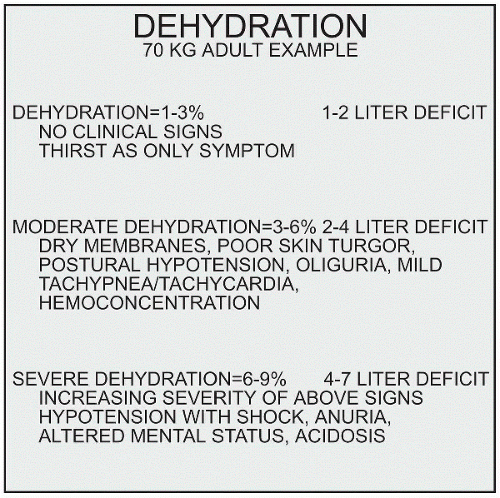Fluid Deficit
QUICK LOOK AT THE CHAPTER AHEAD
When serum sodium levels rise in the vascular system due to a fluid loss, osmosis causes water molecules to shift from the cell into the blood vessel to maintain homeostasis. Normally, this restores the fluid volume. When less fluid is available to exchange among the compartments of the body, however, the circulating blood volume decreases, causing hypovolemia and hypotension. Here we look at fluid volume deficit, the causes, and how the manifestations can start as thirst and end in hypovolemic shock.
 Figure 10-1 Inadequate fluid replacement and excessive fluid losses and causes of fluid volume deficit. |
Fluid volume deficit is a total body water deficit that is associated with a loss of sodium accompanied by water. Isoosmolar fluid volume deficit occurs when sodium and water are lost in equal amounts. Hyperosmolar fluid volume deficit occurs when more fluid is lost than sodium, resulting in a higher serum osmolality than normal (> 295 mOsm/kg). Fluid volume deficit results in conditions known as dehydration and hypovolemia.
Stay updated, free articles. Join our Telegram channel

Full access? Get Clinical Tree



